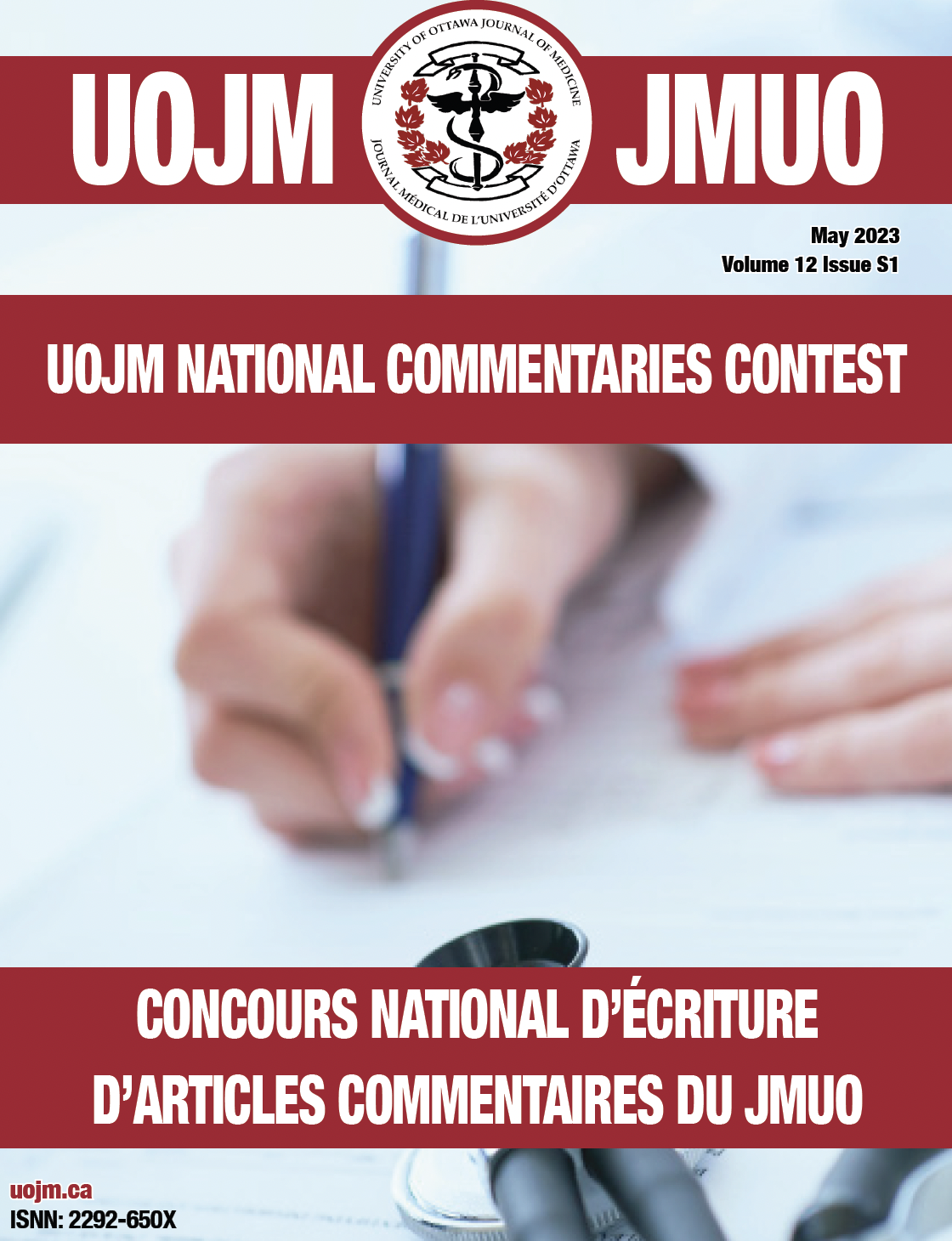On a Positive Note: Current Genetic Strategies Promises a Revolutionary Transformation for the Future of Medicine
DOI:
https://doi.org/10.18192/uojm.v13iS1.6575Keywords:
Medical Genetics, CRISPR, DNA SequencingReferences
References
Fedurco, M., Romieu, A., Williams, S., Lawrence, I. & Turcatti, G. BTA, a novel reagent for DNA attachment on glass and efficient generation of solid-phase amplified DNA colonies. Nucleic Acids Res. 34, e22 (2006).
Picelli S, Björklund AK, Reinius B, Sagasser S, Winberg G, Sandberg R. Tn5 transposase and tagmentation procedures for massively scaled sequencing projects. Genome Res. 2014 Dec;24(12):2033-40. doi: 10.1101/gr.177881.114. Epub 2014 Jul 30. PMID: 25079858; PMCID: PMC4248319.
Mardis ER. DNA sequencing technologies: 2006-2016. Nat Protoc. 2017 Feb;12(2):213-218. doi: 10.1038/nprot.2016.182. Epub 2017 Jan 5. PMID: 28055035.
Anzalone, A.V., Randolph, P.B., Davis, J.R. et al. Search-and-replace genome editing without double-strand breaks or donor DNA. Nature 576, 149–157 (2019). https://doi.org/10.1038/s41586-019-1711-4
Chih-Che Shen, Mu-Nung Hsu, Chin-Wei Chang, Mei-Wei Lin, Jih-Ru Hwu, Yi Tu, Yu-Chen Hu, Synthetic switch to minimize CRISPR off-target effects by self-restricting Cas9 transcription and translation, Nucleic Acids Research, Volume 47, Issue 3, 20 February 2019, Page e13, https://doi.org/10.1093/nar/gky1165
Adli, M. The CRISPR tool kit for genome editing and beyond. Nat Commun 9, 1911 (2018). https://doi.org/10.1038/s41467-018-04252-2
Ran, F., Hsu, P., Wright, J. et al. Genome engineering using the CRISPR-Cas9 system. Nat Protoc 8, 2281–2308 (2013). https://doi.org/10.1038/nprot.2013.143
Gupta, S. K., & Shukla, P. (2017). Gene editing for cell engineering: trends and applications. Critical reviews in biotechnology, 37(5), 672-684.
International Human Genome Sequencing Consortium. Initial sequencing and analysis of the human genome. Nature 409, 860–921 (2001). https://doi.org/10.1038/35057062
Wetterstrand KA. DNA sequencing costs: data from the NHGRI Large-Scale Genome Sequencing Program. http://www.genome.gov/sequencingcosts. Accessed May 8, 2022.
Johansen Taber KA, Dickinson BD, Wilson M. The Promise and Challenges of Next-Generation Genome Sequencing for Clinical Care. JAMA Intern Med. 2014;174(2):275–280. doi:10.1001/jamainternmed.2013.12048
Tucker, T., Marra, M., & Friedman, J. M. (2009). Massively parallel sequencing: the next big thing in genetic medicine. The American Journal of Human Genetics, 85(2), 142-154.
Klein, R. J. et al. Complement factor H polymorphism in age-related macular degeneration. Science 308, 385–389 (2005).
Uffelmann, E., Huang, Q.Q., Munung, N.S. et al. Genome-wide association studies. Nat Rev Methods Primers 1, 59 (2021). https://doi.org/10.1038/s43586-021-00056-9
Prat, A., Baselga, J. The role of hormonal therapy in the management of hormonal-receptor-positive breast cancer with co-expression of HER2. Nat Rev Clin Oncol 5, 531–542 (2008). https://doi.org/10.1038/ncponc1179
Nogrady, B. (2020). How cancer genomics is transforming diagnosis and treatment. Nature, 579(7800), S10.
Nishiguchi, K. M., Miya, F., Mori, Y., Fujita, K., Akiyama, M., Kamatani, T., ... & Nakazawa, T. (2019). Systematic detection of Mendelian and non-Mendelian variants associated with retinitis pigmentosa by genome-wide association study. bioRxiv, 859744.
Rossant, J. (2018). Gene editing in human development: ethical concerns and practical applications. Development, 145(16), dev150888.
Liu, X., Zhang, Y., Cheng, C. et al. CRISPR-Cas9-mediated multiplex gene editing in CAR-T cells. Cell Res 27, 154–157 (2017). https://doi.org/10.1038/cr.2016.142
Lemay, C. G., Rintoul, J. L., Kus, A., Paterson, J. M., Garcia, V., Falls, T. J., ... & Auer, R. C. (2012). Harnessing oncolytic virus-mediated antitumor immunity in an infected cell vaccine. Molecular Therapy, 20(9), 1791-1799.
Nagy, B., Farmer, J. D., Bui, Q. M., & Trancik, J. E. (2013). Statistical basis for predicting technological progress. PloS one, 8(2), e52669.
Cathie Wood: The Genomics Revolution - CRISPR. (n.d.). Www.youtube.com. Retrieved May 8, 2022, from https://www.youtube.com/watch?v=OmxWV1XvE70
Plunkett-Rondeau, J., Hyland, K. & Dasgupta, S. Training future physicians in the era of genomic medicine: trends in undergraduate medical genetics education. Genet Med 17, 927–934 (2015). https://doi.org/10.1038/gim.2014.208
Downloads
Published
Issue
Section
License
Copyright (c) 2022 Pablo Serrano

This work is licensed under a Creative Commons Attribution-NonCommercial-NoDerivatives 4.0 International License.
- Authors publishing in the UOJM retain copyright of their articles, including all the drafts and the final published version in the journal.
- While UOJM does not retain any rights to the articles submitted, by agreeing to publish in UOJM, authors are granting the journal right of first publication and distribution rights of their articles.
- Authors are free to submit their works to other publications, including journals, institutional repositories or books, with an acknowledgment of its initial publication in UOJM.
- Copies of UOJM are distributed both in print and online, and all materials will be publicly available online. The journal holds no legal responsibility as to how these materials will be used by the public.
- Please ensure that all authors, co-authors and investigators have read and agree to these terms.
- Works are licensed under a Creative Commons Attribution-NonCommercial-NoDerivatives 4.0 International License.


